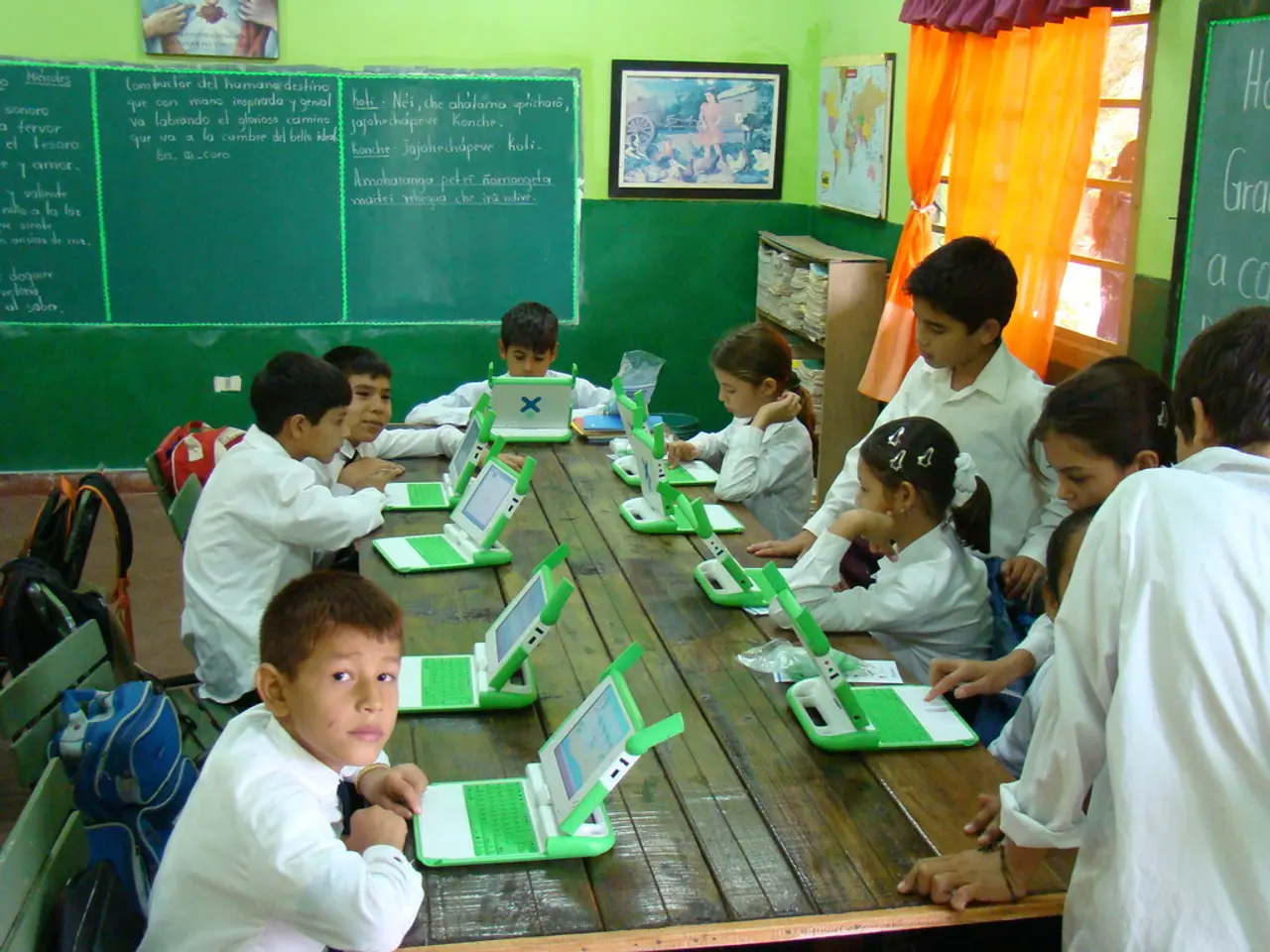Cyber Threats in Education: Essential Information for Teachers on Malware and Phishing Scams
In the rapidly evolving digital landscape of K-12 education, cybersecurity has become a pressing concern. Malicious intrusions in school systems are very common, with recent data showing that 82% of K-12 organizations experienced cyber incidents in 2025. Among nearly 14,000 reported security events, 9,300 were confirmed cyberattacks, often peaking during critical times like exams, severely disrupting education and community services[1].
The most frequent threats include phishing and social engineering, data breaches targeting sensitive student information, and ransomware attacks. Phishing and social engineering are responsible for up to 45% of breaches in some districts, often exploiting compromised credentials through malicious emails and fake login pages[2]. Data breaches targeting sensitive student information, including academic records and personal identifiers, pose significant risks, as illustrated by high-profile incidents at universities and widely used platforms like PowerSchool[2]. Ransomware attacks, denial of service (DDoS), and increasingly sophisticated, scalable attacks facilitated by “ransomware-as-a-service” and “phishing-as-a-service” models, lower the barrier for low-skilled attackers[3].
To combat these threats, school districts can take several key steps. Regular training for staff and students is essential to recognise phishing and social engineering attempts through simulated phishing drills and awareness programs[2][4]. Implementing multi-factor authentication (MFA) and deploying advanced email filtering and threat detection technologies can reduce credential compromise and block malicious communications[2]. Conducting comprehensive internal and external security assessments can identify vulnerabilities, insecure data storage, and access points[2]. Encrypting sensitive data, limiting access, and monitoring activity logs can protect student records and detect suspicious behaviour early[2].
Building digital resilience by raising cybersecurity awareness is also crucial, including educating about emerging scams like fake system alerts (e.g., Apple security alert scams)[4]. Adopting foundational cyber hygiene practices tailored to the environment, such as timely patching, endpoint protection, and incident response planning, is essential[5]. Forming regional partnerships and rethinking cybersecurity strategies in light of shifting federal support can help focus on agile, locally managed solutions that also streamline IT operations[5].
School districts should assess their risk and readiness using tools like the Cybersecurity Rubric (CR) by the Cybersecurity Coalition for Education (CC4E)[6]. Regular internet users may not be aware of the extent of these malicious activities targeting schools. Considering cybersecurity expenses in device refresh plans can significantly impact district budgets. Teachers can play a crucial role in cybersecurity education within the classroom.
In the age of increased digital connectivity, schools and districts are becoming more vulnerable to cybersecurity risks as educational technology use grows. Companies like itopia are at the forefront of combating these threats, actively blocking 15.961 million malware threats in the past 90 days[7]. Itopia uses AI crawlers to monitor over 1 billion domains in real time for suspicious activity[8].
By taking these deliberate, proactive measures, school districts can better safeguard sensitive information, maintain learning continuity, and reduce the damaging impacts of cybercrime on their communities[1][2][3][4][5].
References:
- K-12 Cybersecurity Resource Centre. (2021). 2021 K-12 Cybersecurity Annual Threat Report. Retrieved from https://k12cybersecurity.com/wp-content/uploads/2021/04/2021-K12-Cybersecurity-Annual-Threat-Report.pdf
- EdTech Magazine. (2021). The Top 10 K-12 Cybersecurity Threats of 2021. Retrieved from https://edtechmagazine.com/higher/2021/04/top-10-k-12-cybersecurity-threats-2021
- Cybersecurity Coalition for Education. (2021). K-12 Cybersecurity Landscape. Retrieved from https://cc4e.org/resources/k-12-cybersecurity-landscape/
- Common Sense Education. (2021). Cybersecurity in Schools: Protecting Students and Staff. Retrieved from https://www.commonsense.org/education/digital-citizenship/cybersecurity-in-schools
- K-12 Cybersecurity Resource Centre. (2020). The K-12 Cybersecurity Framework: A Guide for School Districts. Retrieved from https://k12cybersecurity.com/wp-content/uploads/2020/09/The-K-12-Cybersecurity-Framework-A-Guide-for-School-Districts.pdf
- Cybersecurity Coalition for Education. (2021). Cybersecurity Rubric (CR). Retrieved from https://cc4e.org/resources/cybersecurity-rubric/
- itopia. (2021). itopia Stops 15.961 Million Malware Threats in 90 Days. Retrieved from https://www.itopia.com/press-releases/itopia-stops-15-961-million-malware-threats-in-90-days/
- itopia. (2021). itopia Launches AI-Powered Threat Protection for Schools. Retrieved from https://www.itopia.com/press-releases/itopia-launches-ai-powered-threat-protection-for-schools/
- Teachers can incorporate cybersecurity lessons into their curriculums to help students learn about digital risks and protective practices.
- Many K-12 schools are adopting Chromebooks and other digital devices for learning, increasing the need for robust cybersecurity measures to protect student data and school systems from cyberattacks.
- School districts may incorporate multi-factor authentication (MFA) and email filtering technologies to better safeguard sensitive student information, such as academic records, from data breaches.
- Cybersecurity awareness programs for both teachers and students can help recognize phishing attempts and mitigate the risk of social engineering attacks in the school's digital environment.




